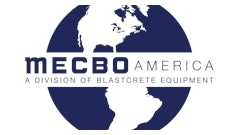
As the demand for sustainable development increases, the concrete industry holds a responsibility to inform stakeholders about the role concrete plays in the sustainability and durability of buildings, roads, bridges and infrastructure. The industry continues to make advancements in reducing its carbon footprint; however, each of us individually carries the responsibility of getting informed and identifying opportunities in the projects on which we work to reduce the environmental impact. This includes further reducing CO2 emissions, encouraging recycling (both existing concrete and by-products of other industries), reducing the impact of stormwater runoff, minimizing waste, and designing and constructing for increased durability - all while increasing societal benefit and reducing economic impact.
At the Fall 2010 American Concrete Institute convention, industry leaders gathered to discuss newest innovations and best practices during the "Sustainability of Concrete Pavements" technical session. The session included presentations on recycled aggregate for airfield pavements, green streets, a review of the Greenroads rating system, blended cements, internal curing and a look at the cement industry's initiatives in climate change mitigation. Following are synopses of two of the presentations by their presenters.
Green Streets
By John T. Kevern, Ph.D., LEED AP, Assistant Professor of Civil Engineering at University of Missouri-Kansas City
Green building and sustainability have become ubiquitous in commercial construction. The benefits range from cost savings from better energy efficiency to more recycled or reused materials, all culminating in a better quality of life for the building occupants. The sustainability movement has now expanded from buildings to streets with the ultimate goal of improving the overall quality of life of an entire community. Fortunately for the concrete community, concrete can play a huge role in the economic, environmental and social components that define a green street.
Ten main areas can help define a green street:
- National Ready Mixed
Concrete Association
- Certified: All Project Requirements plus 32-42 Voluntary Credit points
- Silver: All Project Requirements plus 43-53 Voluntary Credit points
- Gold: All Project Requirements plus 54-63 Voluntary Credit points
- Evergreen: All Project Requirements plus 64+ Voluntary Credit points
Concrete's many environmentally friendly attributes can help achieve certification using the Greenroads rating system. Greenroads is a credit-based system, allowing road projects to earn points for environmentally friendly strategies employed during the design and construction process and helps project design teams select sustainable construction strategies. Greenroads was developed by the University of Washington and CH2M HILL. Greenroads is a publicly available system that can be used by anyone.
Greenroads is a collection of sustainability best practices that are divided into mandatory and voluntary practices. There are 11 mandatory best practices called Project Requirements that must be accomplished for a project to be considered a Greenroad. There are 37 Voluntary Credits totaling 108 points. Greenroads also allows a project to create up to 10 Custom Credits, which brings the total available points to 118. Project teams apply for points by submitting specific documentation in support of the Project Requirement or Voluntary Credit they are pursuing. Table 1 provides credit details.
Category Description Points Project Requirements (PR)Minimum requirements for a GreenroadRequiredEnvironment & Water (EW)Stormwater, habitat, vegetation21Access & Equity (AE)Modal access, culture, aesthetics, safety30Construction Activities (CA)Construction equipment, quality, use14Materials & Resources (MR)Material extraction, processing, transport23Pavement Technology (PT)Pavement design, material use, function20Total Voluntary Credit Points108Custom Credits (CC)Write your own credit for approval10Grand Total118Table 1 (above): Greenroads credit categories and points available for each category.
Greenroads may be used to "certify" a project based on total points achieved. There are four certification levels:
Concrete's contribution to Greenroads certification is summarized in Table 2 (below).
Greenroads certification provides several benefits to a roadway project. It provides a quantitative evaluation of sustainability strategies for the design team and allows innovation because of its end-result orientation. Greenroads also provides a way to confer marketable recognition to a project. You can learn more about Greenroads v1.0, University of Washington, at www.greenroads.org.
| Credit | Goal | Concrete's Contribution | Points |
| EW-2 Runoff Flow Control | Mimic predevelopment hydrological conditions in the right-of-way | Pervious concrete can reduce runoff volume | 1-3 Points |
| EW-3 Runoff Quality | Improve water quality of stormwater runoff leaving the roadway right-of-way | Pervious concrete can improve runoff quality | 1-3 Points |
| EW-7 Ecological Connectivity | Provide or improve wildlife access and mobility across roadway facility boundaries and reduce vehicle-wildlife collisions and related accidents | Road crossings are typically made with concrete | 1-3 Points |
| AE-3 Context Sensitive Solutions | Deliver projects that synthesize transportation requirements and community values through effective decision making and thoughtful design | Visual and aesthetic components are often made of concrete | 5 points |
| AE-4 Traffic Emissions Reduction | Reduce operational mobile-source emissions to improve air quality and human health | Research has shown that cars and trucks traveling concrete roadways consume less fuel | 5 Points |
| AE-5 Pedestrian Access | Promote walkable communities by providing new (or by upgrading existing) sidewalk facilities within the roadway right-of-way | Walks are most often made of concrete | 1-2 Points |
| AE-7 Transit & HOV Access | Promote use of public transit and carpools in communities by providing new transit and HOV facilities or by upgrading existing facilities in the roadway right-of-way | Bus lanes and stations are often constructed of concrete | 1-5 Points |
| CA-3 Site Recycling Plan | Minimize the amount of construction-related waste destined for landfill and promote environmental stewardship through good housekeeping practices at the work site | Most concrete can be recycled | 1Point |
| CA-7 Water Use Tracking | Generate project-level information about construction water use | Water use is always tracked by ready mixed concrete producers | 2 Points |
| MR-2 Pavement Reuse | Reuse as much of an existing roadway facility as practical | Concrete roads are durable and have long service lives so they can be reused as part of new projects | 4-5 Points |
| MR-4 Recycled Materials | Reduce lifecycle impacts from extraction and production of virgin materials | Concrete uses SCMs as replacement for portland cement; Concrete can be crushed and used as aggregate base or as aggregate in concrete | 1-5 Points |
| MR-5 Regional Materials | Promote use of locally sourced materials to reduce impacts from transportation emissions, reduce fuel costs, and support local economies | Most concrete is produced within 50 miles of the construction site | 1-5 Points |
| PT-1 Long-Life Pavement | Minimize life cycle costs by promoting design of long-lasting pavement structures | Concrete pavements designed using existing standards meet the definition of long-life pavement | 5 Points |
| PT-2 Permeable Pavement | Improve flow control and quality of stormwater runoff through use of permeable pavement technologies | Pervious concrete has been successfully used in a multitude of applications including residential roads, sidewalks, pathways, parking areas | 3 points |
| PT-4 Cool Pavement | Reduce contribution to localized increased air temperatures due to pavement reflectance and minimize stormwater runoff temperatures | Concrete pavements generally meet the minimum surface reflectivity requirement regardless of age or aggregate source | 5 points |
Table 2 (above): Concrete's contribution to Greenroads certification.
References
Stephen T. Muench, Jeralee Anderson and Tim Bevan, "Greenroads: A Sustainability Rating System for Roadways," Proceedings of the International Conference on Sustainable Concrete Pavement, Sacramento, Calif., September 15-17, 2010, pp. 398-408.
ACI Spring Convention in Tampa, Fla.
The ACI Spring Convention, "Concrete - The Strength of Florida," will be held in Tampa, Fla., April 3-7. To learn more about the Spring Convention, visit www. aciconvention.org.






























